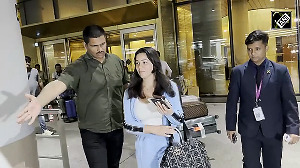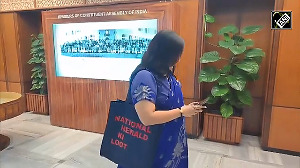 The stock and foreign exchange markets have had a negative reaction to the government’s biggest social security programme, the National Food Security Bill. Food minister K V Thomas questions the rationale behind such a response, in an interview with Business Standard.
The stock and foreign exchange markets have had a negative reaction to the government’s biggest social security programme, the National Food Security Bill. Food minister K V Thomas questions the rationale behind such a response, in an interview with Business Standard.
Edited excerpts:
With finance minister P Chidambaram saying the containing of the fiscal deficit at 4.8 per cent of GDP for 2013-14 is a red line, do you think the timing of passage of the Bill by the Lok Sabha was correct?
In the existing Targeted Public Distribution System, based on the 2001 census and 1992-93 population, our (annual) subsidy is Rs 109,000 crore (Rs 1,090 billion).
The 2011 census is now available and we are bound to implement the TPDS on its basis, which would have pushed up the subsidy automatically to Rs 113,000 crore (Rs 1,130 billion), leaving apart schemes such as Integrated Child Development Services, mid-day meals, etc.
After the food Bill, the burden is just an additional Rs 10,000 crore (Rs 100 billion) a year.
So, why are investors linking the Bill with the tumbling rupee and negative sentiments in stock markets?
My counter-question is why such an adverse reaction with just a Rs 10,000 crore increase in subsidy? Suppose there was no food security Bill; would not the subsidy have risen even then?
The reality is that the markets have not taken this move kindly.
The question is if these fluctuations in the rupee and stock markets happened only because of the Bill, which in any case will happen not tomorrow but over a year.
The monthly increase (in spending) is less than Rs 1,000 crore (Rs 10 billion).
Is the crash happening because of this?
This clearly means some sections of people in this country do not want the poor to get food.
Are you suggesting some conspiracy is behind the plunge in the rupee value against the dollar and reactions in the stock markets?
I don’t know.
And, what is the enhancement of the foodgrain?
We now need 60 mt; after the Bill comes into force, we would need just two mt extra.
Our production is 80 mt a year, procurement is around 75 mt.
You can export with subsidy or give to domestic manufacturers with subsidy but you will not allow it to be given to the poor. Is that the way?
But 67 per cent of the population (the Bill’s coverage) is not poor.
That is another issue; even now, people are asking for covering 100 per cent of the people.
In a situation where the Bharatiya Janata Party (the biggest opposition party) is asking for universal rati-oning, we are giving subsidised food to only 67 per cent.
What will be your message to the markets and others who are worried about the implication of the Bill on the economy?
How can any economist attribute the market reaction to the Bill, when the subsidy enhancement is just Rs 10,000 crore (Rs 100 billion) a year?
Nor is it something which happened today.
Depreciation of the rupee has been on for quite some time; this Bill has been under discussion for long.
Why did not the market react so negatively when the Ordinance (putting the same provisions into effect) was promulgated?
The question is if we can afford the Bill, given the state of the economy.
We can, which is why we have brought it.
Should the fruits of growth only go to some people?
There are a large number of people in the lower strata who need a meal at least a day.
Are we not committed to them?
How would you respond to critics who say politics has taken over economics?
When the lowest strata of the society get something, all sorts of questions are being raised.
Why are we forgetting comments made by Amartya Sen, M S Swaminathan, etc, in support of the Bill?
Image: KV Thomas ' Photograph, courtesy: Consumeraffairs.nic.in


.jpg)










 © 2025
© 2025